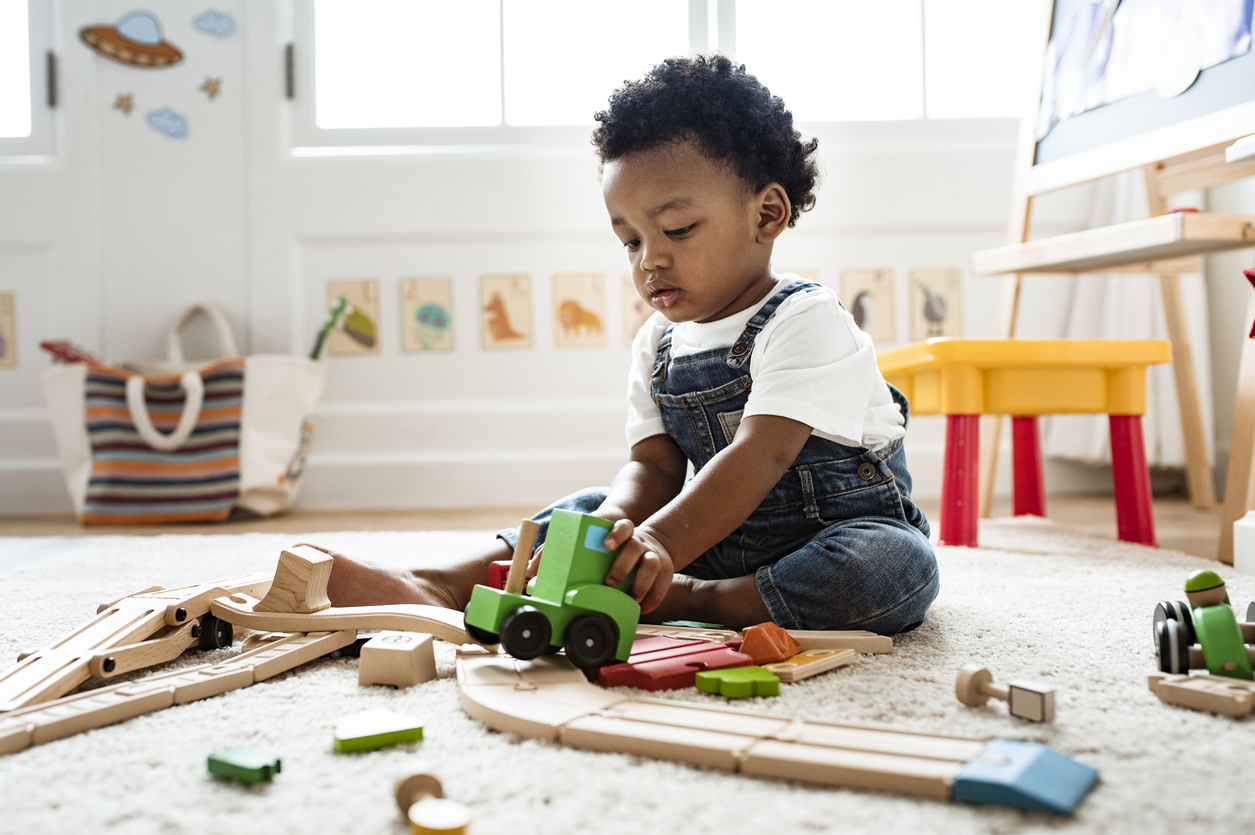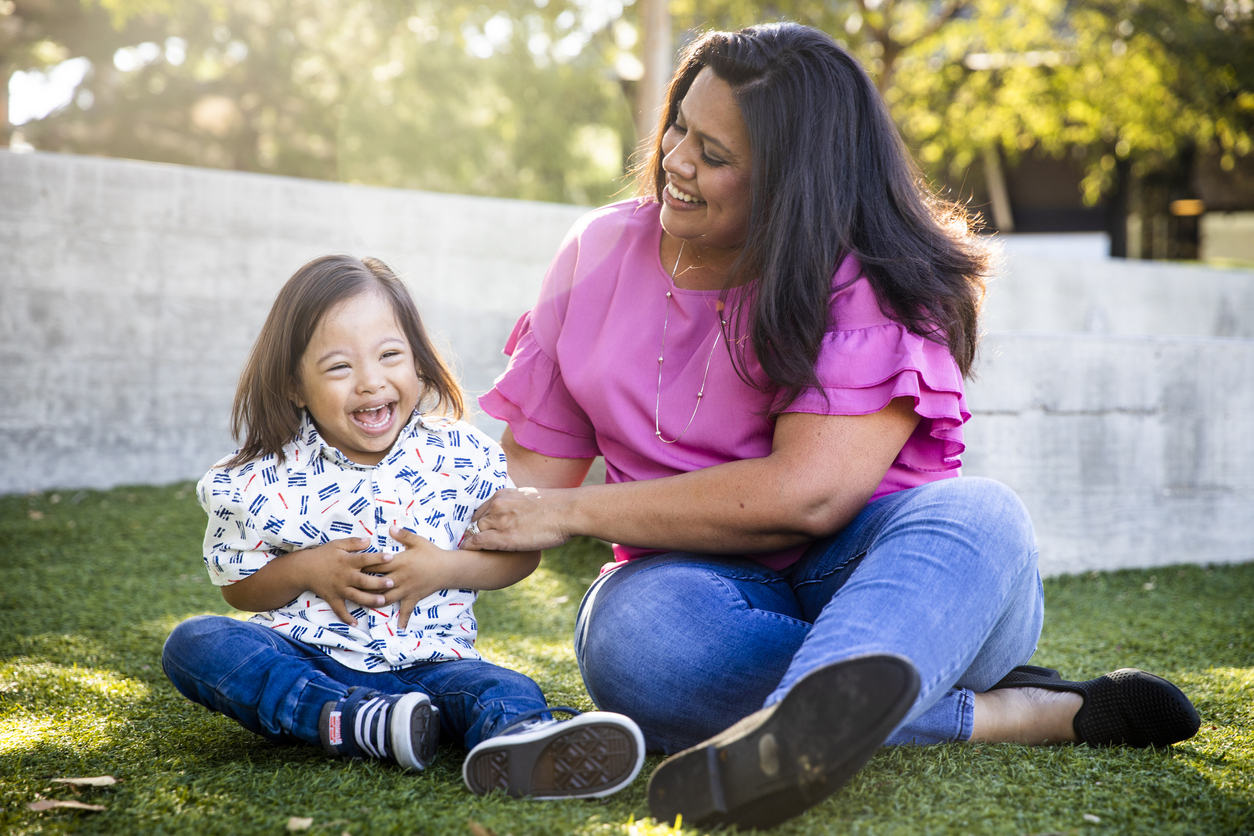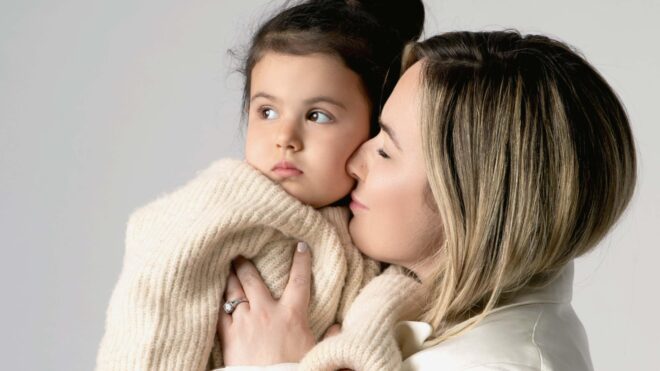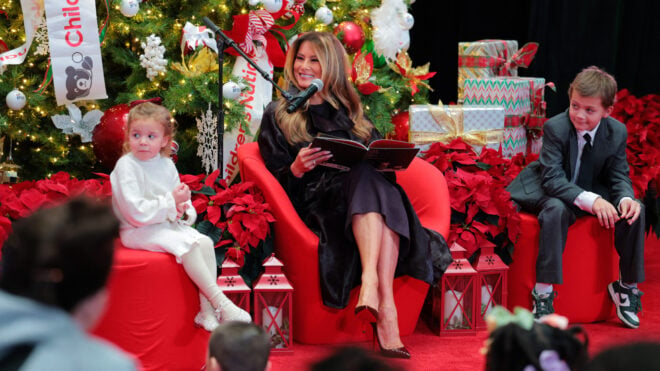
First words are a milestone moment, but for many parents, it’s also nerve wracking waiting and wondering when your child will speak or why they have yet to utter a sound. According to the National Institute on Deafness and Other Communication Disorders, research suggests that the first six months of life are the most crucial to a child’s development of language skills.
LittleThings spoke with Leanne Sherred, MS, CCC-SLP, and president and chief clinical officer of Expressable speech therapy, about everything parents need to know.
Parents typically start to notice verbal growth in their child when they are about 9 to 12 months old, according to Sherred. “Your baby should begin imitating some simple, non-speech sounds, like ‘Vroom! Vroom!’ for a car or ‘Moo!’ for a cow. The first word typically happens somewhere around the one-year mark. However, it could be a little earlier or later.”
Sherred says, “The best way to know if your child is on track with their speech and language development is to learn about the expected milestones for their age. Many signs of a communication issue can be seen before a child even says their first word.”
“By 18 to 24 months, your child should use at least five to 25 words regularly and spontaneously,” says Sherred. “They should also be readily imitating words. During year two, your child should have a spoken vocabulary of around 50 words. They should use two-word phrases, engage in short conversations, and begin to use pronouns, such as me, my, and mine. At age 3, your child should have about 200 words in their vocabulary and be using at least three-word sentences. They should be able to ask and answer questions and engage in back-and-forth conversation.”
Sherred breaks down four important communication milestones:
1. Imitation

“Imitation is a core part of language growth,” she says. “It teaches your baby the back-and-forth of communication, which is a stepping stone to early conversational skills. Parents can prompt their child to imitate them in four areas, which usually follow each other sequentially: gesture imitation (think waving and pointing), play-action imitation (hand motions in songs, or playing with a toy), verbal imitation (imitating your sounds), and word imitation (imitating your words).”
2. First Words, Then Early Phrases and Sentences

“You can help your child use more words using natural language modeling,” Sherred explains. “This means working one step above how your child is currently communicating. So, if your child is currently gesturing without using words, then we want to model one single word to show them what they could say in that moment instead of gesturing. For example, if your child is reaching for the counter for their cup of juice, you can model, ‘Juice.’ If your child is using single words, show them how to put words together. So, if your child is playing with a car and saying ‘Go,’ you could model, ‘Go car!’”
3. Following Directions

“This skill is important for a child’s comprehension and school readiness. You can teach them to follow directions using visual cues like gestures. For example, when you tell your toddler, ‘Give me your shoes,’ point to the shoes at the same time. If you want your child to sit down at the table, [then] walk over to the table, touch the chair, and say, ‘Sit down, please.’”
4. Answering Questions

“You can help your child answer who, what, where, when, and how questions in a few ways,” she says. “You can offer them choices for the answer (‘Where is your doll? On the bed, or on the floor?), have them fill in the blank (‘Where is your doll? She’s on the xxxx’), or have them repeat the answer after you (‘Where is your doll? She’s on the floor’).”
Early intervention might be necessary if your child isn’t progressing typically with nonverbal communication.
Signs of Typical Progression

According to Sherred, a few signs of typical progression to look for include:
- Your child can focus on a shared object with another person. This is called joint attention.
- They maintain eye contact and respond to your sounds and gestures.
- Your child is engaging in play activities.
- They can vocalize with babbling, such as “baba” or “mimi,” or other sounds.
“If your child isn’t meeting these age-expected milestones, you may begin to see them get frustrated,” Sherred says. “Many behavioral issues are caused by a toddler’s inability to communicate their wants and needs. When a child’s language is developmentally delayed, they may seem to be ‘stuck’ at a certain stage — perhaps relying on gestures or crying to communicate, as opposed to starting to use words.”
Parents can begin promoting language development as early as infancy by using toys appropriately, helping their child make sounds and say words as they play, and building receptive language skills.
As a child grows, parents and caregivers can make language learning part of the everyday routine.
Here are some of Sherred’s recommendations:
Offer Your Child Choices

“Providing choices is a powerful way to promote language development,” advises Sherred. “Communicating what they want, and then receiving it, creates a reward structure that can encourage children to speak more. Try this: While helping your child get dressed, present two shirts. You can say, ‘Would you like the blue shirt? Or the red shirt?’ Pause, wait, and see if your child responds. If they usually only gesture or point, then prompt them to imitate the name of their desired shirt color. If they typically give you one word (‘blue’), prompt them for a two-word phrase (‘blue shirt’).”
Use Time Spent in the Car

“When you stop at a light, you can say, ‘Stop! The car stopped!’ When it’s time to drive, say, ‘Go! Go car!’ See if your child will imitate these phrases or the words ‘stop’ and ‘go.’ You can also sing songs together. Pause during songs and encourage your child to fill in the blanks: ‘The wheels on the bus go ______.’”
Label Items at the Grocery Store

“As you shop and find each item on your list, have your child label the item, or use it in a phrase before you put it in the cart. You can tell your child, ‘I need your help! What is this?’ and point to the item on the shelf.”
Use Prompt Communication at the Playground

“Swinging is the perfect activity to work on speech. As you push your child on the swing, grab the swing and wait. See if your child requests, ‘More!’ or ‘Go!’ before you reward them with a push. For added cueing, you could model, ‘Ready, set, ….’ and see if your child fills in the blank with, ‘Go!’”
Read Together Every Day

“Reading allows your child to hear new vocabulary and learn correct sentence structure,” says Sherred. “Ask your child to identify items in the pictures to target receptive vocabulary. You can then ask them to name the items to target expressive vocabulary. For children who are already using some phrases, you can ask a question like, ‘What do you see in the picture?’”
One thing that can impact a child’s development is passive screen time with little interaction or engagement. Sherred says, “For 2- to 5-year-olds, only one hour of screen time per day is recommended. The more time your child spends sitting passively in front of a screen, the less time they spend interacting with the world around them. Active screen time, on the other hand, encourages your child to interact and stay engaged, and it stimulates their mind and creativity. Certain educational apps that involve two-way communication or language practice are great examples. So is video chatting with family members.”







